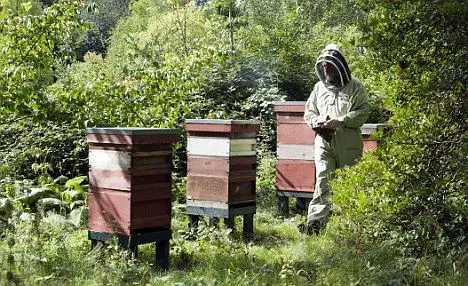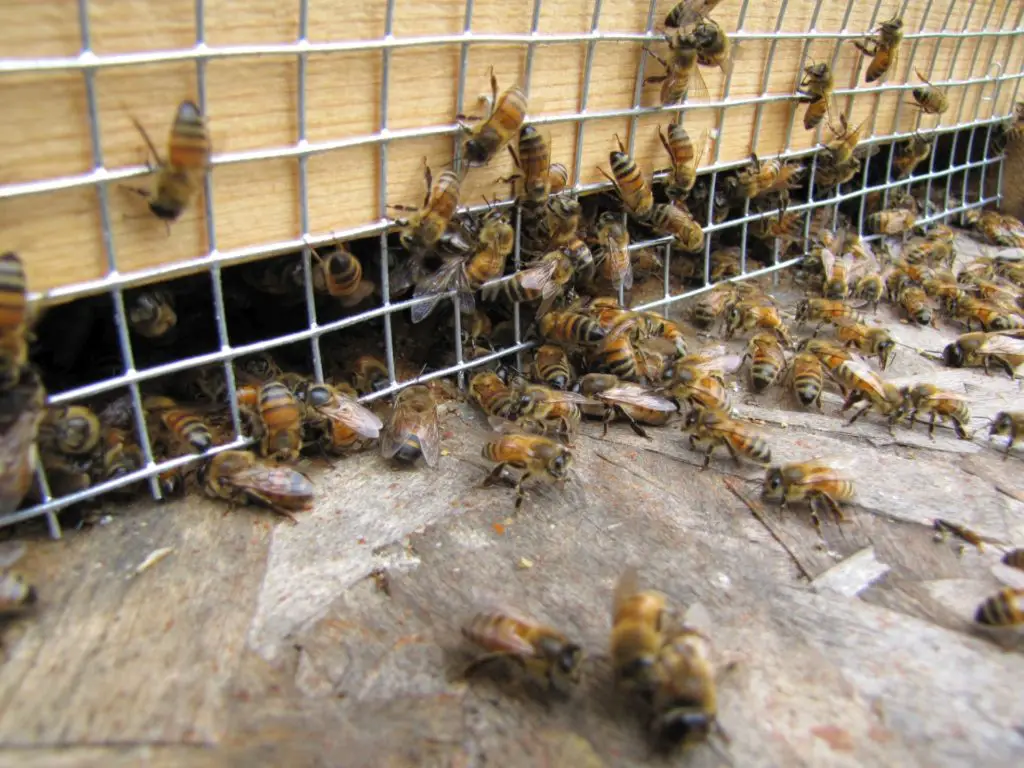Affiliate Disclaimer - As an Amazon Associate I earn from qualifying purchases.
It supports the website. So, Thank you
I’ll be the first person to say that I love bees. They’re truly fascinating creatures but let’s face it, we don’t want to share our gardens with swathes of them.
There are more than 20,000 species of bees and around 450 of these species are known as digger bees, belonging to the Anthophora genus.
Digger bees are sometimes called ground bees but whatever name they go by, most people don’t want them in their gardens which leads us to the topic of how to get rid of digger bees.
There are several humane methods you can use to get rid of digger bees such as using vinegar, filling in their nests, and watering your lawn regularly.
I’d never suggest using chemicals as a first line of defense as the last thing we want to do is kill or harm these beautiful insects. Keep reading for some easy DIY tips on getting rid of digger bees.
Table of Contents
Are Digger Bees Dangerous?
Bees have something of an unfair reputation, in my opinion. While many bee species do have stingers, they’re hesitant to use them unless they really feel threatened.
Most digger bees (ground bees) are equipped with a stinger but the chances of them actually using this are slim to none.
Digger bees are solitary insects that simply want to go about their business undisturbed. The only time they’ll actually attack is when they are directly threatened. Simply being in a bee’s presence is unlikely to anger it unless you start making sudden movements or trying to swat it.
A lot of people are fearful of bees and that’s a legitimate phobia. Moreover, it’s worth considering that, if you have pets or children playing in your yard then they’re more likely to let curiosity get the better of them which could lead to a sting.
This is one of the main reasons that people don’t welcome digger bees.
How To Know If You Have Digger Bees
As I have mentioned, there are several thousand species of bees so figuring out which one is in your garden can be a difficult task. Also known as ground bees, it’ll come as no surprise that digger bees nest in the ground, primarily in bare patches of dry soil.
If you notice small, round holes in the soil then this is a good indicator that digger bees are present. These nest holes will usually have small mounds of soil around them where the bee has been digging; another key indicator.
How To Get Rid Of Digger Bees
While digger bees are not harmful, it’s understandable that you’d want to remove them from your garden. Fortunately, since these are solitary bees, you won’t be faced with tackling thousands of individuals as you would when dealing with something like honey bees. Here are some easy tips for digger bee removal.
Keep The Soil Moist
Imagine trying to dig a nest in wet soil; a pretty impossible task, right? But that’s great news for homeowners as the simple act of keeping the soil moist is a great way to deter digger bees.
You don’t need to overwater your soil as this is not good for your lawn or any plants you may be growing. Instead, using a sprinkler every few days should be enough to keep the soil moist without interfering with the greenery.
Of course, at the height of summer or during a very dry period, you may need to water the lawn a little more frequently to prevent it from drying out.
Fill In Digger Bee Nests
Digger bees will leave their nests in search of food and other resources so filling the holes in is a great way to stop them from coming back.
You’ll need to make sure that you locate all of the nest holes and fill these in with soil. Once you have done this, it’s a good idea to put a solid object on top such as a piece of wood or a slab as this will prevent the bees from simply digging their way back in.
Use Vinegar
Bees hate the smell of vinegar so using this on their nests is a surefire way to send them packing.
All you need is a spray bottle filled with equal parts water and vinegar. You can then apply this to the nest sites and the bees will soon be on the move.
However, there is some suggestion that vinegar may be lethal to bees in large amounts and if you’re looking for a humane removal method, this probably isn’t going to be the right choice.
In that case, there’s plenty of other smelly food items in your pantry that will certainly do the trick. For example, bees detest the smell of cinnamon so sprinkling this around the nest site will get rid of them without causing any harm.
Avoid Having Bare Soil
If you were going to build a house and had the choice between a well-prepared piece of land or one that was heavily overgrown, you’d choose the former, right?
The same can be said for bees. Digger bees are on the lookout for areas of clear soil that they can dig straight into. If the soil is covered in grass or foliage, they’re highly unlikely to build a nest there.
So, once you have successfully gotten rid of the digger bees, it may be worth taking a look at the landscape in your garden and adding more plant life where things are looking a little bare.
If you’ve had problems with digger bees nesting in your lawn then now is a fantastic time to reseed. Not only will this act as a deterrent to digger bees but it’ll also improve the aesthetic of your garden; it’s a win-win!
When All Else Fails
In most cases, the tips I have provided in the above sections will be enough to get rid of any digger bee problems in your garden. However, there are always going to be situations that are a little outside of our control and it’s at these times that we need to take more drastic action.
If you have tried the above tips to no avail, you may need to consult the expertise of a pest removal company or you might wish to try insect killer products like sprays or dusts.
However, it is important for me to remind you that this should only ever be done as a last resort. Digger bees are pollinators and play a crucial role within the ecosystem so killing them is never a good idea.
Safety Tips When Removing Digger Bees
For the most part, digger bees won’t pose a threat. However, if you’re invading their nest and trying to get rid of them, they’ll likely see this as a danger and may be more inclined to sting.
For this reason, it’s vital that you take proper safety precautions when treating the bee’s nest and you can take the following actions:
- Always wear protective gear such as gloves, long sleeves and pants and some form of eye protection, like goggles.
- If you know that you have an allergy to bee stings, never attempt to treat the nest yourself. Enlist the help of a friend or family member; it simply isn’t worth the risk.
- Try to treat the problem when the bees are least active. This tends to be around dusk.
- Be sure to remove any children or pets from the vicinity while you are handling the digger bee problem.
- When treating digger bee nests, avoid wearing any heavily scented perfumes or cosmetics as this may draw attention to you.
- If you are confronted with an angry bee, avoid making any sudden movements and do not attempt to swat the bee. This will only cause it to become more agitated and increase the risk of a sting. Instead, slowly back away and wait to complete the treatment until the bee has gone.
Final Thoughts
Digger bees are common in domestic gardens but when they start building their nests in your space, it’s only natural to want to get them gone!
But is there a safe and humane way on how to get rid of digger bees? The good news is that there are several methods you can use.
Safety is always important when dealing with bees as there is the potential for a sting. However, in the main, these are docile creatures that are unlikely to sting unless they feel threatened.
If you try DIY methods only to find that they aren’t successful, then you may need to use chemicals or enlist the help of a professional. But since digger bees are important pollinators, this should only be done when all else fails.




